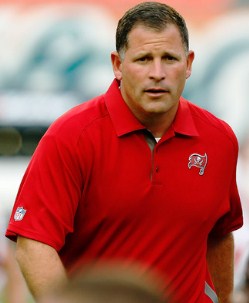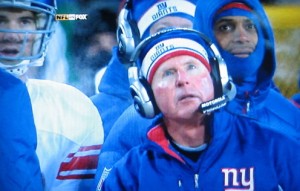“It’s a fine line between being a physical, aggressive football team and getting a flag. You gotta be careful. I don’t ever want to be the least penalized team in the league, because I don’t think you’re trying hard enough then…. But I certainly do want to be in the top 10. That’s where you should be. You should be — five through 10 is a great place to be as a penalized team.”
Schiano’s statement makes some sense. Not all penalties are the same, even though they’re usually grouped that way. False starts, late hit penalties, excessive celebrations, delays of game and “12 men on the field” are examples of penalties that drive every coach crazy. When we think of undisciplined teams or stupid penalties, these are the ones we envision. Other penalties, like offensive holding or defensive pass interference might not be bad at all, and might be symptomatic of rational thinking. If a lineman believes the likelihood of his man getting to the quarterback is higher than the likelihood of him getting called for a penalty if he holds the defender, then holding may be the wise course of action. Similarly, a defensive back that tries to prevent a touchdown on pass interference isn’t necessarily committing a bad penalty. Intentional grounding is rarely a penalty that really hurts the team, as it’s usually called when for the quarterback, the alternative is usually a sack (or worse).
Off-sides, roughing the passer or certain penalties associated with hits (defensive receivers, leading with the helmet, etc.) are correlated with aggressive behavior. They should be minimized, of course, but I would not shocked to discover that they were generally correlated with positive play. The point being there are many types of penalties, an issue I’ve touched on before.
Still, I performed a regression analysis on penalties and team success. The results show that fewer penalties appears to be very slightly correlated with winning. A team with 80 penalties on the season would be expected to win 52.4% of its games, while a team with 100 penalties on the year would be projected to win 50.1% of its games. To jump just one win in a 16-game season, the results here indicate that a team would need to commit 54 fewer penalties. That’s absurd on its face,, which means that there is not necessarily a causal relationship between penalties and winning. Which is exactly what Schiano implied.
But we could break it down even further. I grouped all teams since 1990 into penalty ranges. As you can see, there does seem to be a small relationship between fewer penalties and winning:
Of course, this doesn’t go against what Schiano said. He didn’t want to be below average in penalties, just not number one. And I’m sure he’d want to be number one at avoiding stupid penalties. But I agree with him that the goal of a team shouldn’t be to avoid penalties at all costs, just like a team shouldn’t try to avoid interceptions at all costs. The goal is simply to win, and there being too aggressive isn’t the only option that carries with it a tradeoff — a team that isn’t aggressive enough is also unlikely to win championships.
[Updated: I realized that I might as well post the results of the teams to lead the league in fewest penalties and the eventual Super Bowl champs. The first table shows the team with the fewest penalties each season and how they performed in the post-season. On average, these teams won 9 games. The second table shows all Super Bowl champions since 1990 and where they ranked in penalties; on average, they ranked 12th in penalties.]










